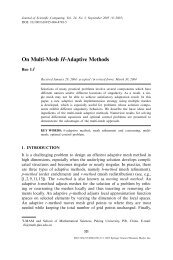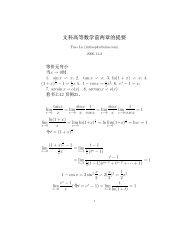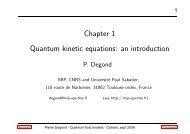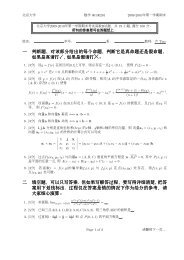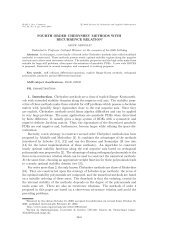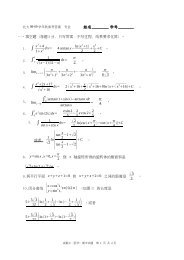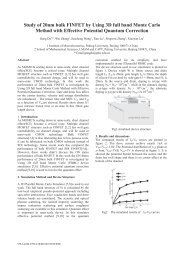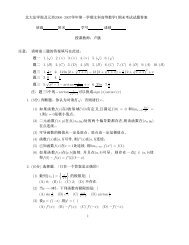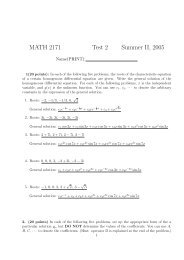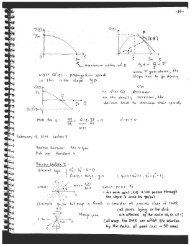Abstract
Abstract
Abstract
Create successful ePaper yourself
Turn your PDF publications into a flip-book with our unique Google optimized e-Paper software.
CHAPTER 2. TEMPORAL INTEGRATION 29<br />
and the time-derivate G(y, t), and they return an approximate value of y at time t ∗ .<br />
ROCK4 is an explicit fourth-order Runge-Kutta method [1]. ROCK4 uses variable<br />
stages in its computations to create a stability region that contains a large portion of<br />
the negative real axis. This stability region allows this method to solve stiff problems,<br />
which are generally a challenge for an explicit method. Due to their stability regions,<br />
implicit methods are used to handle stiff problems, but their computational cost per<br />
time step is much higher than an explicit method. While the explicit time step is<br />
cheaper to compute, the implicit methods are more stable than the explicit methods,<br />
and therefore are allowed to take larger time steps. So if we can efficiently solve the<br />
nonlinear equations that arise from the implicit method, it could easily be the faster<br />
method.<br />
VODEPK is an implicit ODE solver [6], [7]. VODEPK allows the user to se-<br />
lect one of two numerical integration methods. The first is a BDF method [30],<br />
VODEPK’s stiff method. BDF methods approximate the derivative of the solution<br />
with the derivative of the interpolation polynomial constructed with previous com-<br />
puted values of the solution. The second method is an implicit Adams method [30],<br />
VODEPK’s non-stiff method. This method also uses an interpolation polynomial.<br />
The polynomial, though, does not interpolate the solution, but it is an approxima-<br />
tion of the time-derivative. The method then integrates the polynomial instead of the<br />
actual time-derivative to get the approximated solution at the next time step. The




